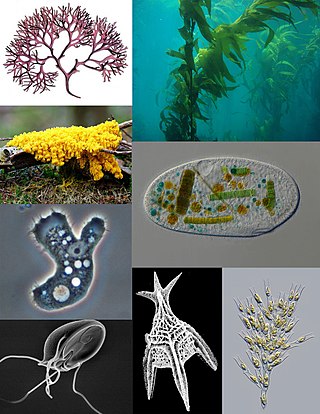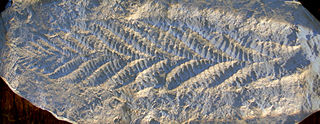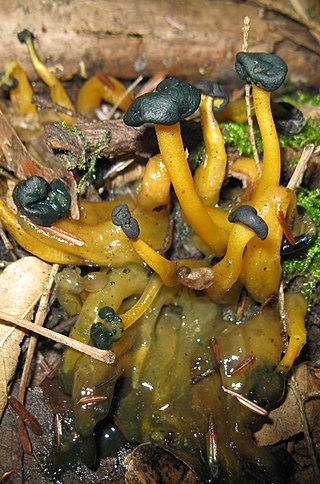
CITES is a multilateral treaty to protect endangered plants and animals from the threats of international trade. It was drafted as a result of a resolution adopted in 1963 at a meeting of members of the International Union for Conservation of Nature (IUCN). The convention was opened for signature in 1973 and CITES entered into force on 1 July 1975.
In biology, taxonomy is the scientific study of naming, defining (circumscribing) and classifying groups of biological organisms based on shared characteristics. Organisms are grouped into taxa and these groups are given a taxonomic rank; groups of a given rank can be aggregated to form a more inclusive group of higher rank, thus creating a taxonomic hierarchy. The principal ranks in modern use are domain, kingdom, phylum, class, order, family, genus, and species. The Swedish botanist Carl Linnaeus is regarded as the founder of the current system of taxonomy, as he developed a ranked system known as Linnaean taxonomy for categorizing organisms and binomial nomenclature for naming organisms.

In biology, a taxon is a group of one or more populations of an organism or organisms seen by taxonomists to form a unit. Although neither is required, a taxon is usually known by a particular name and given a particular ranking, especially if and when it is accepted or becomes established. It is very common, however, for taxonomists to remain at odds over what belongs to a taxon and the criteria used for inclusion, especially in the context of rank-based ("Linnaean") nomenclature. If a taxon is given a formal scientific name, its use is then governed by one of the nomenclature codes specifying which scientific name is correct for a particular grouping.

Morphology is a branch of biology dealing with the study of the form and structure of organisms and their specific structural features.

The NatureServe conservation status system, maintained and presented by NatureServe in cooperation with the Natural Heritage Network, was developed in the United States in the 1980s by The Nature Conservancy (TNC) as a means for ranking or categorizing the relative imperilment of species of plants, animals, or other organisms, as well as natural ecological communities, on the global, national or subnational levels. These designations are also referred to as NatureServe ranks, NatureServe statuses, or Natural Heritage ranks. While the Nature Conservancy is no longer substantially involved in the maintenance of these ranks, the name TNC ranks is still sometimes encountered for them.

The conservation status of a group of organisms indicates whether the group still exists and how likely the group is to become extinct in the near future. Many factors are taken into account when assessing conservation status: not simply the number of individuals remaining, but the overall increase or decrease in the population over time, breeding success rates, and known threats. Various systems of conservation status are in use at international, multi-country, national and local levels, as well as for consumer use such as sustainable seafood advisory lists and certification. The two international systems are by the International Union for Conservation of Nature (IUCN) and The Convention on International Trade in Endangered Species of Wild Fauna and Flora (CITES).

Wastebasket taxon is a term used by some taxonomists to refer to a taxon that has the purpose of classifying organisms that do not fit anywhere else. They are typically defined by either their designated members' often superficial similarity to each other, or their lack of one or more distinct character states or by their not belonging to one or more other taxa. Wastebasket taxa are by definition either paraphyletic or polyphyletic, and are therefore not considered valid taxa under strict cladistic rules of taxonomy. The name of a wastebasket taxon may in some cases be retained as the designation of an evolutionary grade, however.
Neontology is a part of biology that, in contrast to paleontology, deals with living organisms. It is the study of extant taxa : taxa with members still alive, as opposed to (all) being extinct. For example:
In phylogenetics, a sister group or sister taxon, also called an adelphotaxon, comprises the closest relative(s) of another given unit in an evolutionary tree.

A least-concern species is a species that has been categorized by the International Union for Conservation of Nature (IUCN) as evaluated as not being a focus of wildlife conservation because the specific species is still plentiful in the wild. They do not qualify as threatened, near threatened, or conservation dependent.

A near-threatened species is a species which has been categorized as "Near Threatened" (NT) by the International Union for Conservation of Nature (IUCN) as that may be vulnerable to endangerment in the near future, but it does not currently qualify for the threatened status.
The Botanical and Zoological Codes of nomenclature treat the concept of synonymy differently.
The Declared Rare and Priority Flora List is the system by which Western Australia's conservation flora are given a priority. Developed by the Government of Western Australia's Department of Environment and Conservation, it was used extensively within the department, including the Western Australian Herbarium. The herbarium's journal, Nuytsia, which has published over a quarter of the state's conservation taxa, requires a conservation status to be included in all publications of new Western Australian taxa that appear to be rare or endangered.
FloraBase is a public access web-based database of the flora of Western Australia. It provides authoritative scientific information on 12,978 taxa, including descriptions, maps, images, conservation status and nomenclatural details. 1,272 alien taxa are also recorded.

Form classification is the classification of organisms based on their morphology, which does not necessarily reflect their biological relationships. Form classification, generally restricted to palaeontology, reflects uncertainty; the goal of science is to move "form taxa" to biological taxa whose affinity is known.

In biology, taxonomic rank is the relative level of a group of organisms in an ancestral or hereditary hierarchy. A common system of biological classification (taxonomy) consists of species, genus, family, order, class, phylum, kingdom, and domain. While older approaches to taxonomic classification were phenomenological, forming groups on the basis of similarities in appearance, organic structure and behaviour, methods based on genetic analysis have opened the road to cladistics.
The New Zealand Threat Classification System is used by the Department of Conservation to assess conservation priorities of species in New Zealand.

In biological taxonomy, circumscription is the content of a taxon, that is, the delimitation of which subordinate taxa are parts of that taxon. For example, if we determine that species X, Y, and Z belong in genus A, and species T, U, V, and W belong in genus B, those are our circumscriptions of those two genera. Another systematist might determine that T, U, V, W, X, Y, and Z all belong in genus A. Agreement on circumscriptions is not governed by the Codes of Zoological or Botanical Nomenclature, and must be reached by scientific consensus.

Leotiomyceta represents all the filamentous ascomycete fungi (Pezizomycotina), excluding the classes Pezizomycetes and Orbiliomycetes. It is well supported in several studies comparing DNA sequences in fungi. It has originally been proposed as a superclass but later was proposed as a rankless taxon for any well supported group above class. Rankless taxa do not strictly follow the rules for taxonomic classifications in plants and fungi (ICBN) and therefore these names are informal, although they appear to reflect natural groups.

Hadrosauromorpha is a clade of iguanodontian ornithopods, defined in 2014 by David B. Norman to divide Hadrosauroidea into the basal taxa with compressed manual bones and a pollex, and the derived taxa that lack them. The clade is defined as all the taxa closer to Edmontosaurus regalis than Probactrosaurus gobiensis. This results in different taxon inclusion depending on the analysis.











